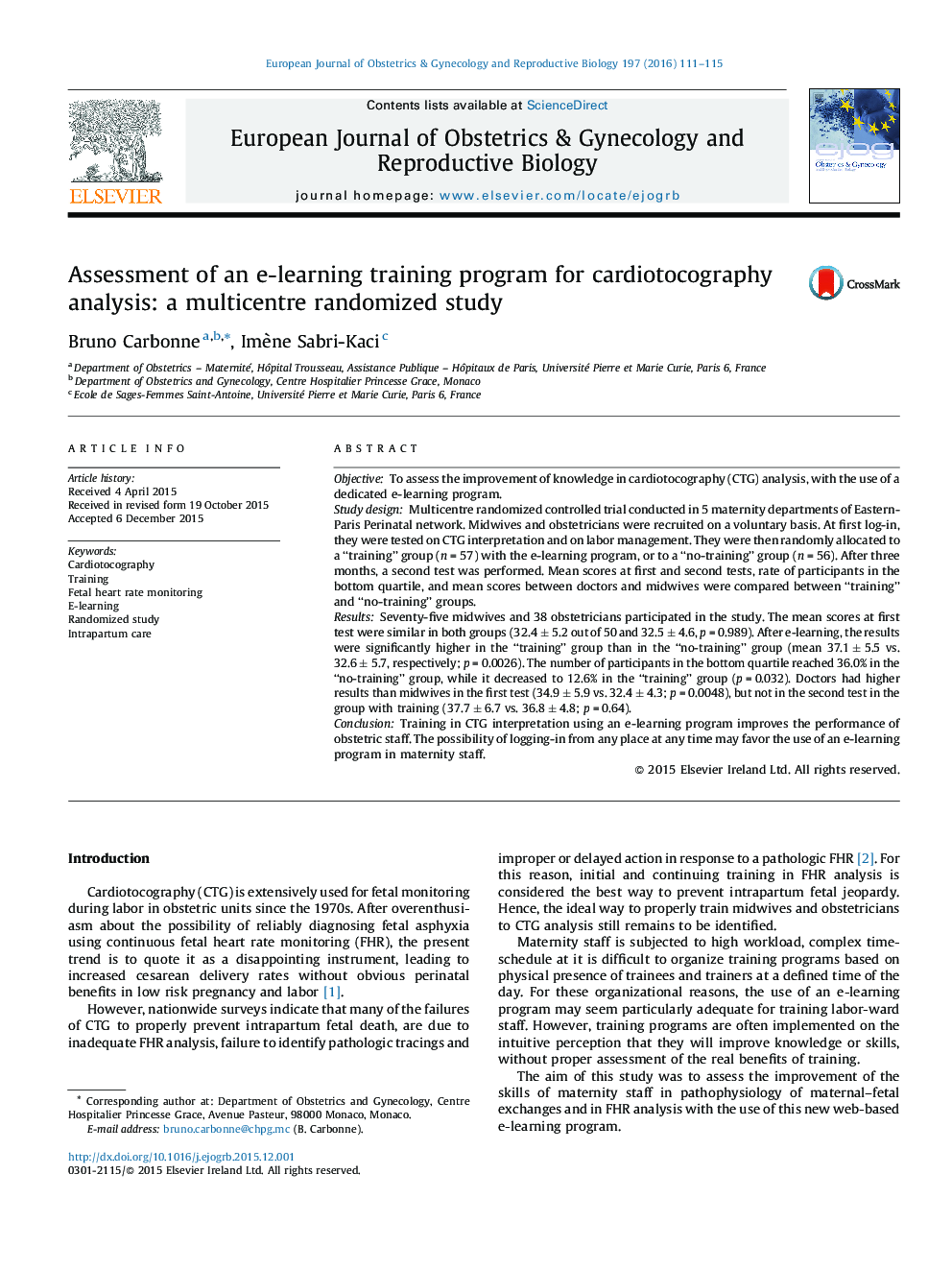| Article ID | Journal | Published Year | Pages | File Type |
|---|---|---|---|---|
| 3919450 | European Journal of Obstetrics & Gynecology and Reproductive Biology | 2016 | 5 Pages |
ObjectiveTo assess the improvement of knowledge in cardiotocography (CTG) analysis, with the use of a dedicated e-learning program.Study designMulticentre randomized controlled trial conducted in 5 maternity departments of Eastern-Paris Perinatal network. Midwives and obstetricians were recruited on a voluntary basis. At first log-in, they were tested on CTG interpretation and on labor management. They were then randomly allocated to a “training” group (n = 57) with the e-learning program, or to a “no-training” group (n = 56). After three months, a second test was performed. Mean scores at first and second tests, rate of participants in the bottom quartile, and mean scores between doctors and midwives were compared between “training” and “no-training” groups.ResultsSeventy-five midwives and 38 obstetricians participated in the study. The mean scores at first test were similar in both groups (32.4 ± 5.2 out of 50 and 32.5 ± 4.6, p = 0.989). After e-learning, the results were significantly higher in the “training” group than in the “no-training” group (mean 37.1 ± 5.5 vs. 32.6 ± 5.7, respectively; p = 0.0026). The number of participants in the bottom quartile reached 36.0% in the “no-training” group, while it decreased to 12.6% in the “training” group (p = 0.032). Doctors had higher results than midwives in the first test (34.9 ± 5.9 vs. 32.4 ± 4.3; p = 0.0048), but not in the second test in the group with training (37.7 ± 6.7 vs. 36.8 ± 4.8; p = 0.64).ConclusionTraining in CTG interpretation using an e-learning program improves the performance of obstetric staff. The possibility of logging-in from any place at any time may favor the use of an e-learning program in maternity staff.
